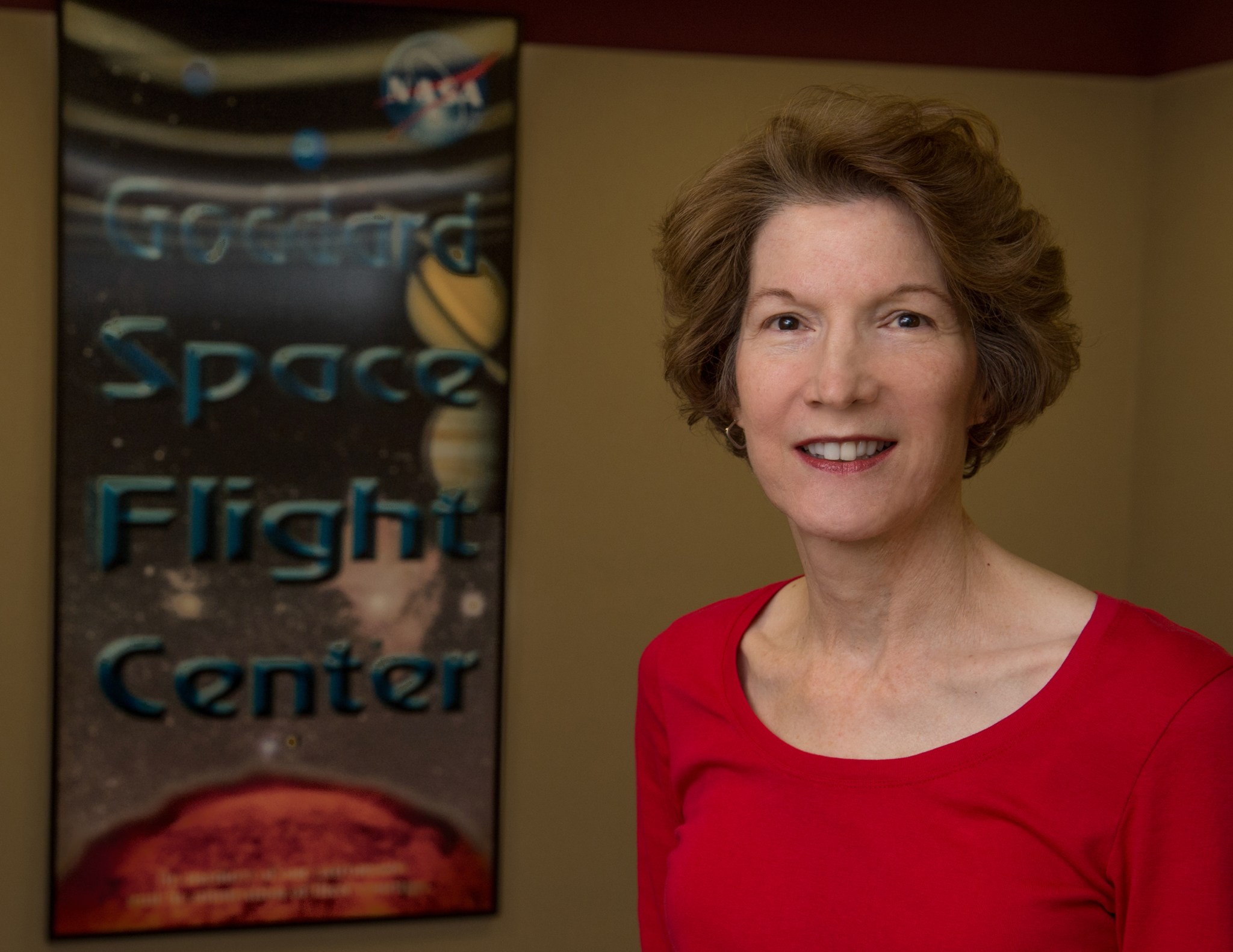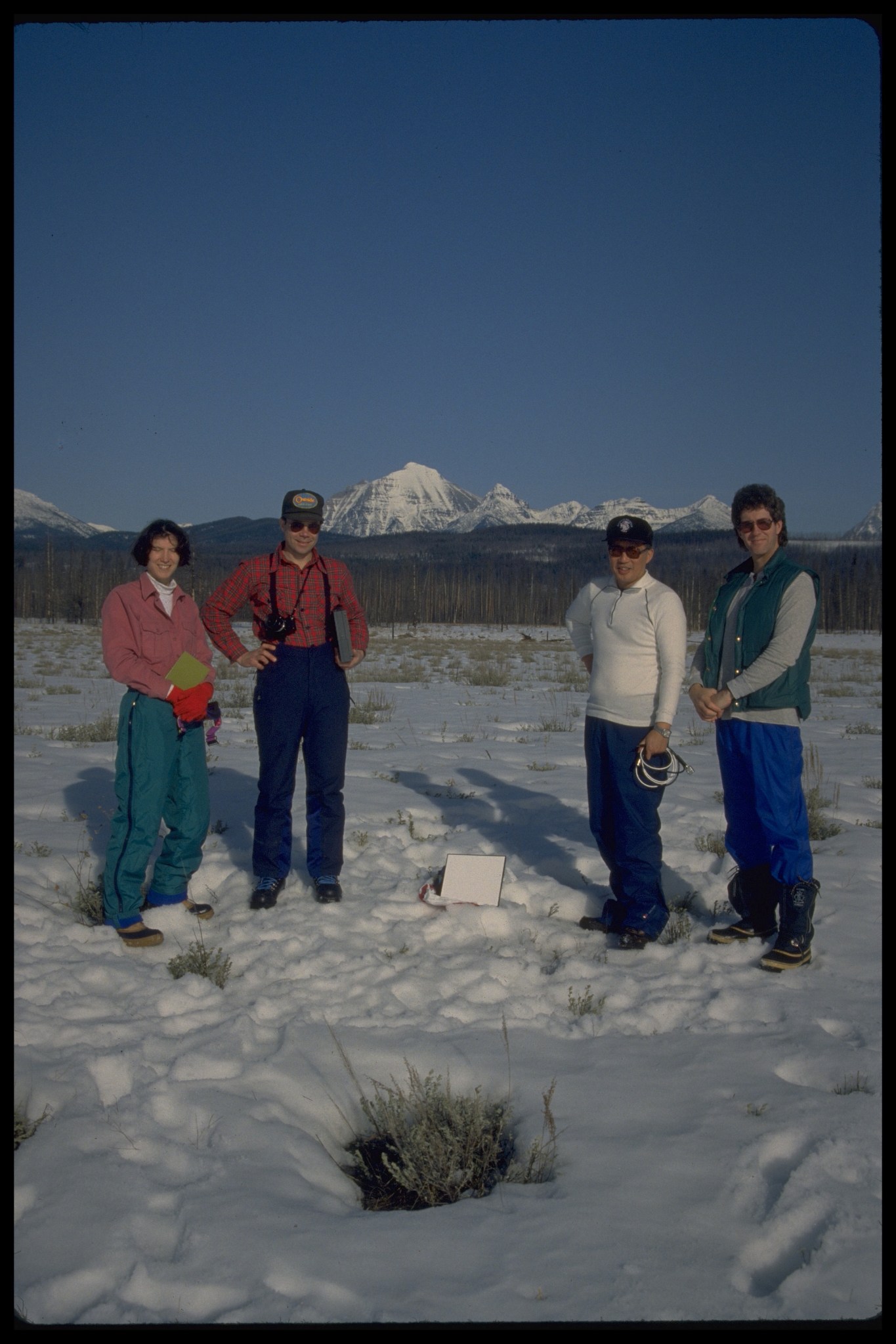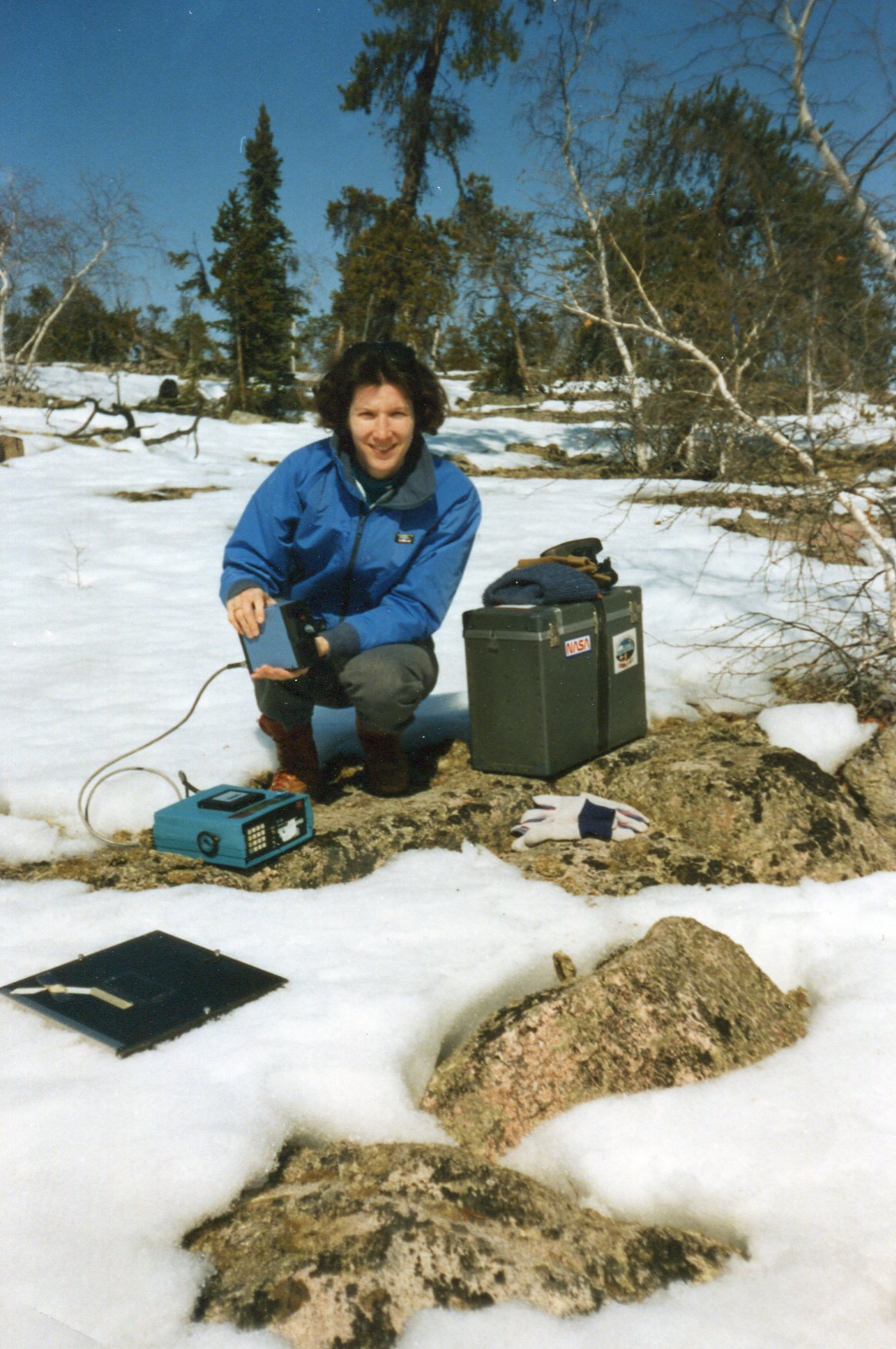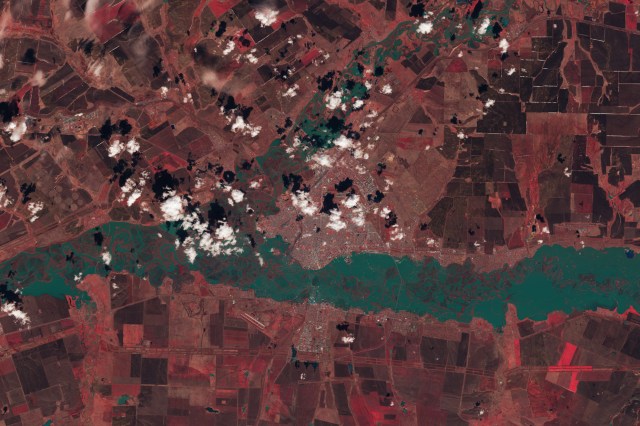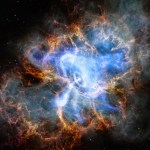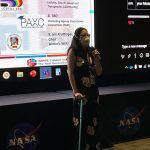Name: Dorothy Hall
Title: Associate Chief of the Cryospheric Sciences Laboratory
Formal Job Classification: Senior Scientist
Organization: Code 615, Cryospheric Sciences Laboratory, Earth Science Division, Sciences and Exploration Directorate
Senior scientist Dorothy Hall’s field work has taken her through snowy fields, to frozen glaciers, to icy lakes and rivers. But she was always cold.
What do you do and what is most interesting about your role here at Goddard? How do you help support Goddard’s mission?
I’m a snow and ice scientist in the cryospheric sciences laboratory. We conduct research on ice and snow using remote sensing data from satellites and aircraft to study the extent, thickness and melt of ice and snow to further our understanding of climate and climate change. We study changes in glaciers and ice sheets, snow cover and the shrinking Arctic sea ice. The Arctic is changing more than most other places on Earth in response to climate change because the very bright snow and ice features are shrinking. When snow and ice melt and the extent shrinks, less solar radiation is reflected back to space so the darker ocean and land can absorb more solar radiation causing warming in the lower atmosphere.
How does field work help you conduct research?
Field measurements are absolutely critical. We need to find out what’s happening on the ground to validate what we’re measuring from space.
What are some of your most memorable field expeditions?
I’ve taken measurements in the northern U.S., Canada and other places in the Arctic such as Greenland and Norway’s Svalbard Islands, but my most memorable field expeditions have been in Alaska. I can’t count the number of times I’ve been to Alaska. Though I haven’t been there lately, I used to go several times a year.
One memorable field excursion took place in 1987 to Mt. Wrangell with Carl Benson, now Emeritus professor at the University of Alaska. (His “baby brother,” as he calls him, Bob Benson, is an astronomer at Goddard, now emeritus.) Carl, Jim Foster, also emeritus from Goddard, and Al Chang, now deceased, and I flew in a helicopter to Mt. Wrangell to take measurements at the same time that the Landsat satellite was passing overhead. The work included measuring the reflectivity of the snow and glacier ice using a spectrometer.
One day, in the middle of our field work under a clear sky and seemingly-ideal weather conditions, the helicopter pilot suddenly shouted, “We’re leaving. Now!” In the mountains, clouds can appear quickly, reducing visibility to zero. You don’t argue with the pilot, and of course it turned out that he was right – bad weather rolled in shockingly fast.
Another interesting trip was studying lake and river ice in northern Alaska. A bush pilot flew us to the North Slope, where we landed next to streams to measure the extent and character of the ice on the river for comparison with satellite data. Though we feared encounters with grizzly bears, our biggest problem was fighting moose-sized mosquitoes that relentlessly feasted on every square inch of exposed flesh.
I’ve also studied ice in lakes near Barrow on the North Slope, where we drilled holes through the ice using hand augers. Drilling through six and a half feet of lake ice with a hand auger is not an easy task. At 20 degrees below zero, we were sweating as we took turns drilling.
We had a makeshift lab at the Naval Arctic Research Lab (as it was called back then) in Barrow, the northernmost town in Alaska. Though a little town, Barrow hosts an important scientific research facility, where scientists come from all over to study everything from ice to birds to aurora. You meet a lot of interesting people there especially when the weather is so bad that you can’t venture outside to make measurements. Ping Pong was big on those days, as was our mixture of coffee and hot chocolate, both of which were always available to keep us going.
Other memorable trips were taken to study snow and lake ice in Glacier National Park, Montana. It was really challenging carrying equipment while cross-country skiing. As we skied on and I fell further behind the group, more and more weight was taken out of my backpack by well-meaning colleagues and also by park rangers who were guiding us. If not for them, I’d probably still be plodding my way to the field site. Being out in nature in the middle of winter in the snow is unparalleled; there is no other experience like it.
How do you stay warm?
I was always cold. My long-time colleague, Jim Foster, once left his parka in his hotel room on field trip in northern Canada when the temperature was around 20 degrees below zero. I thought we would have to call it quits that day but he continued to work without it. I think we were drilling through lake ice. As soon as the wind started blowing, it became unbearable. Even with all of my layers of clothing and my parka on, I’m sure I was colder than Jim was by the time we stopped for the day.
Why did you become a snow and ice scientist?
As a little kid, growing up outside of Washington, D.C., I liked books on astronomy and geology. I was also intensely interested in the space program, and NASA’s flights to the moon. In high school I became interested in aviation and got a private pilot’s license when I was 17. I was also interested in photography and combined those interests to take pictures from the air. This all came together after Hurricane Agnes in 1972, when I flew over the Potomac River at Great Falls and took pictures of the flooding after the hurricane. I was active in the Flying Club while at the University of Maryland.
I was also fascinated with Alaska, which was still quite remote back then. I wanted to walk on a glacier and experience the 24-hour daylight in the summer. Glaciers intrigued me; I can’t explain why. I was always interested in the Earth, why the seasons changed and other natural phenomenon. Forty years ago, almost all of Alaska was still a frontier. This was way before cell phones and computers, so once there, you often weren’t in contact with friends and family. It could be very isolating, but also very interesting.
What is your educational background and what brought you to NASA?
I have a bachelor’s and doctorate in geography from the University of Maryland. At the time, geographers studied cartography and photogrammetry and I was interested in that. I could also combine my interests in geology and climatology into my major in what is now the Geographic Sciences Department at UMD. Aerial photography fit well with my interests in cartography and Earth Sciences.
I happened to be in a physics lab at the University of Maryland in 1973 when I met John Degnan, then a graduate student in physics. John told me that I should apply to Goddard for a job because they were starting to do a lot of Earth science work following the 1972 launch of the Earth Sciences Technology satellite, later renamed Landsat-1. In 1974, I applied for a summer internship at Goddard, but didn’t get it. However I did get a summer internship at NASA Headquarters. My boss, Bob Schiffer, later recommended me for a job at Goddard. The following January, I started in the Hydrology and Oceanography Branch at Goddard where I spent the next 30 years, though the name of that branch evolved over time. About 10 years ago, I moved to the Cryospheric Sciences Laboratory. Recently, I got my 40-year pin from NASA along with a nice paperweight.
How important is teamwork or collaboration with others to your being able to do your job?
Teamwork and collaboration with people inside Goddard, at other NASA centers and at universities are paramount in importance. Furthermore, different parts of the Arctic are owned by different countries, so the very nature of our work involves international collaboration. We’re not just working in our backyards, because a satellite image shows no geographic boundaries.
Who is the most interesting, inspiring or amazing person you have met or worked with at Goddard?
There are too many to name. I’ve always thought that the work here is interesting, but the people are even more interesting. You learn not to pigeon-hole people because you will invariably be wrong once you get to know them.
Vince Salomonson, who was my boss for nearly 30 years, was truly an inspiration. He has great enthusiasm for work and an extraordinary work ethic. He played a seminal role in both the Landsat and Earth Observing System and Moderate Resolution Imaging Spectroradiometer programs which have been phenomenally successful. Though retired, he attends the annual MODIS meetings at which he is revered by those who knew him from his days at Goddard.
Are you a mentor?
One of the best parts of my job is being able to help many young people. I’ve had lots of interns and post-docs, many of whom are still working in cryospheric sciences today. I like working with enthusiastic people of all ages who are really interested in what they’re doing. Young people have skill sets that didn’t even exist when I started here about 40 years ago and I learn a lot from them.
What is most unique about Goddard?
The people who work here are endlessly fascinating. The mix of talent and personalities creates a very stimulating and engaging workforce. It’s mind boggling to think of all the discoveries made or enabled by NASA.
What keeps you coming back to Goddard?
You learn something new every day. For a scientist, it just doesn’t get any better than working at Goddard, which is probably why I’m still here.
Do you have a favorite way or place to kick back, relax or have fun?
I have a lot of interests outside of work. I enjoy walking, physical fitness, organic gardening, travelling with my husband and crafting (mainly crocheting). I especially like getting together with my three sons and daughter-in-law.
What is the best thing that ever happened to you at Goddard?
My youngest son, Steve Wright, was a summer intern at Goddard in the Microwave Instrument Technology Branch, which at the time was headed by Cathy Long. A colleague, Ed Kim, recommended to Cathy that Steve might be a good fit there for the summer to help with the passive-microwave instrument which was, at the time, to be flown on the Aquarius satellite (later launched successfully in 2011). Because of that internship, Steve decided to study engineering and is now a mechanical engineer in the automotive industry. I doubt that those who mentored him that summer ever realized the positive impact that they had on him.
Read about Dorothy Hall’s son, Steve Wright and his eye-opening internship here at Goddard.
Read more Conversations With Goddard
Also read about what our people do Outside Goddard
By Elizabeth M. Jarrell
NASA’s Goddard Space Flight Center, Greenbelt, Md.

Conversations With Goddard is a collection of Q&A profiles highlighting the breadth and depth of NASA’s Goddard Space Flight Center’s talented and diverse workforce. The Conversations have been published twice a month on average since May 2011. Read past editions on Goddard’s “Our People” webpage.




























